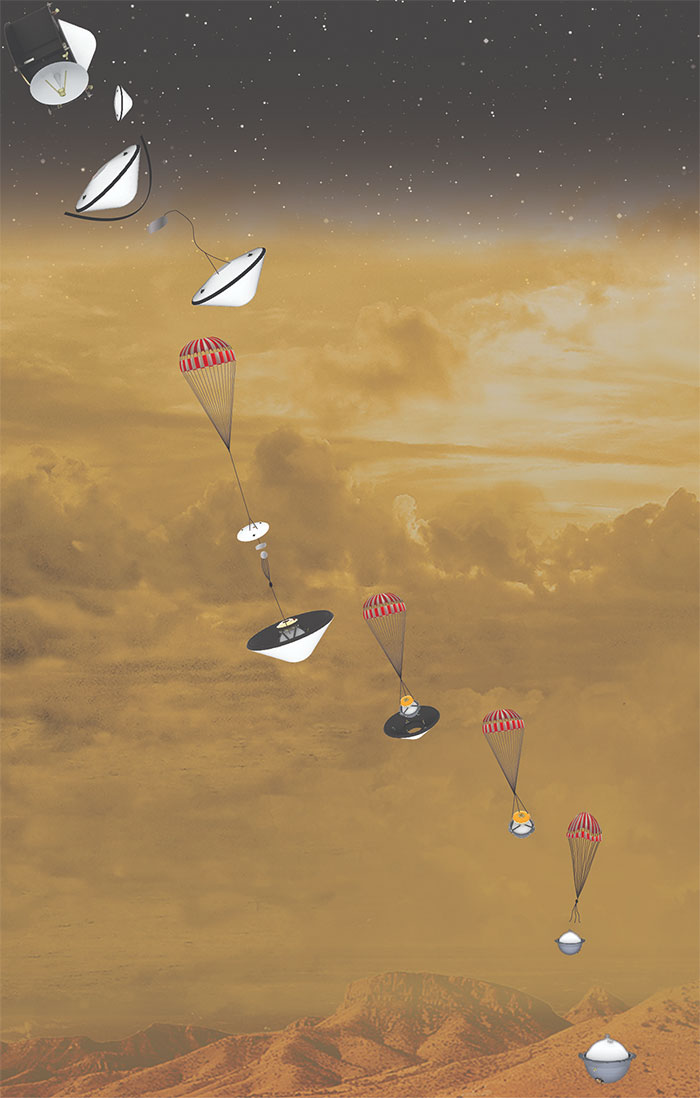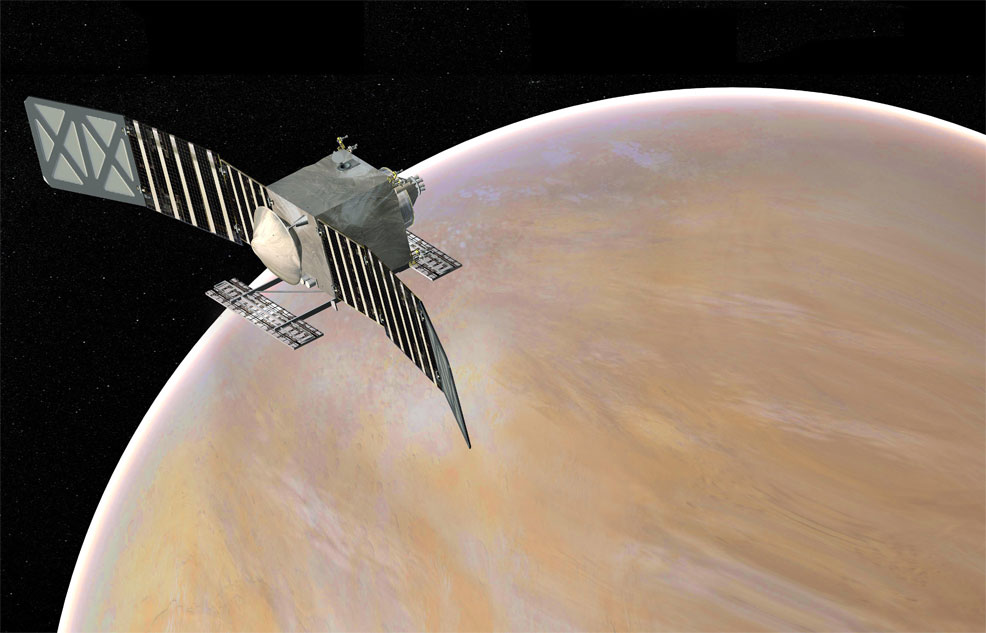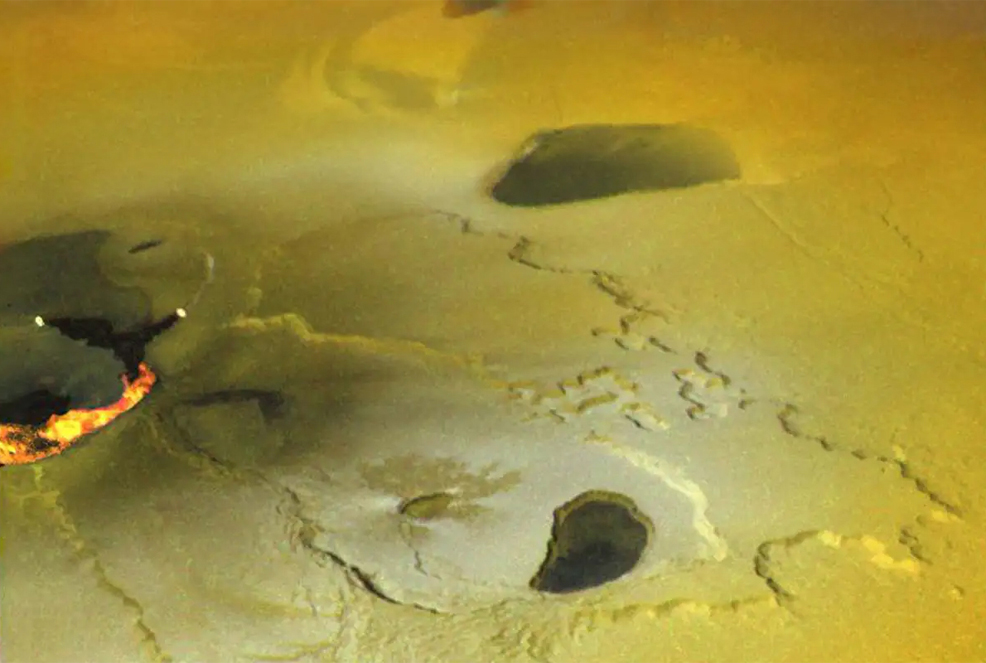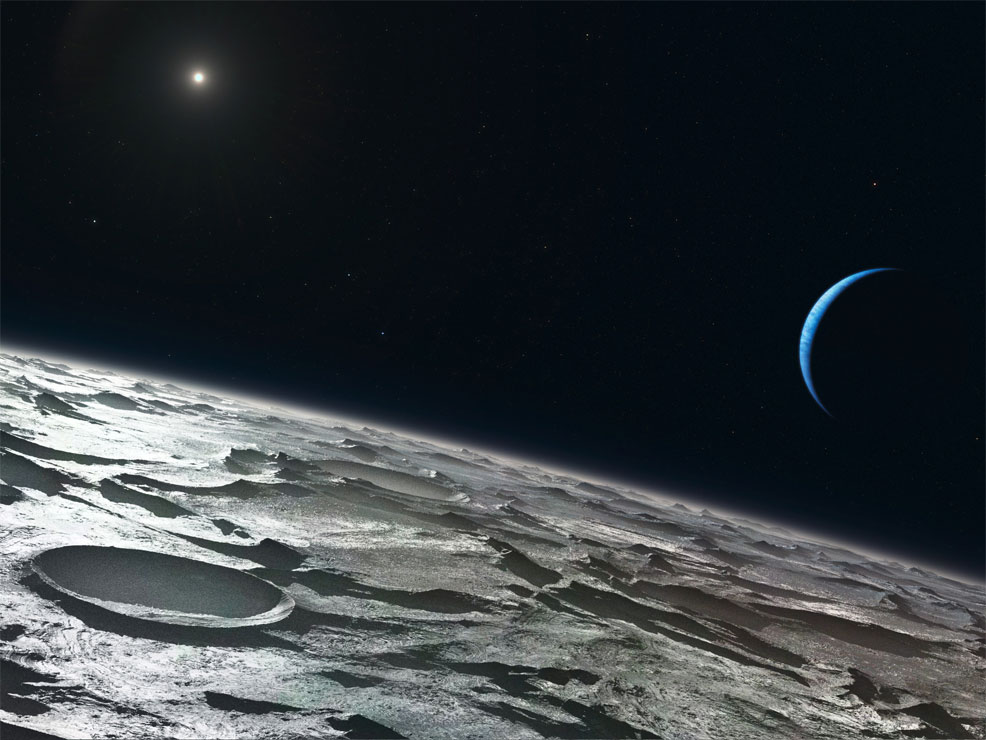
19th February 2020 Four new missions to study the Solar System proposed by NASA NASA has announced the finalists for its next Discovery Program missions. The four candidates include spacecraft to explore Venus, Jupiter's volcanic moon Io, and Neptune's icy moon Triton. The final two selections will be confirmed in 2021. NASA's Discovery Program is a series of lower-cost, highly focused missions to explore the Solar System. Each mission has a cost cap, below NASA's Flagship and New Frontiers programs. As a result, Discovery missions tend to be aimed at a more specific scientific goal (rather than serving a general purpose). The most recently-selected Discovery missions were announced in 2017 – Lucy, a probe that will visit several asteroids including the Trojans, with a launch date of October 2021; and Psyche, a spacecraft to study the large metallic asteroid 16 Psyche, with a launch date of August 2022. The 2020 Discovery Program candidates have now been revealed. They are as follows:
DAVINCI+ (Deep Atmosphere Venus Investigation of Noble gases, Chemistry, and Imaging Plus) This spacecraft, if chosen, would travel to Venus and study both its atmosphere and surface properties – revealing new clues about the planet's origin and how it evolved over time, and confirming whether it once had oceans. The mission could provide new insights into how and why the Venus atmosphere is so different from those of Earth and Mars. DAVINCI+ will plunge through the hellish atmosphere to precisely measure its composition down to the surface. A purpose-built descent sphere will enclose and protect the scientific instruments from the intense environment, which includes temperatures more than twice that of an oven on its highest setting, along with crushing air pressure and sulphuric acid rain. The “+” in DAVINCI+ refers to the imaging component of the mission, which includes an HD camera on the descent sphere (similar to that used during Curiosity's descent to Mars in 2012), as well as those on the orbiter to map the surface rock types. The last U.S.-led, in-situ mission to Venus was in 1978. The results from DAVINCI+ have the potential to reshape our understanding of terrestrial planet formation in our Solar System and beyond.
VERITAS (Venus Emissivity, Radio Science, InSAR, Topography, and Spectroscopy) VERITAS would study the different rock types on Venus, creating the first-ever global map of its surface composition. Using a synthetic aperture radar while orbiting the planet, VERITAS could produce highly detailed 3D reconstructions of topography and determine surface elevations – with a resolution as sharp as 5 m (16 ft) – confirming whether processes, such as volcanism and plate tectonics, are still active. The mission could reveal the geologic history of Venus and why it developed so differently than Earth. It will determine the location of basalt, for example, and look for the presence of granite, which are important for revealing the history of water. VERITAS might even reveal the existence of water in some form on present-day Venus.
Io Volcano Observer (IVO) IVO would visit Jupiter's moon, Io, to learn how tidal forces shape planetary bodies. Io is heated by the constant crush of Jupiter's gravity and is the most volcanically active body in our Solar System. More than 400 volcanoes can spew plumes of gas as high as 500 kilometres (300 miles) above its constantly changing surface. Little is known about Io's specific characteristics – such as whether a magma ocean exists in its interior. Arriving at some point in the 2031 to 2033 timeframe, IVO would perform up to 10 close-in flybys, assessing how magma is generated and behaves on Io. Like the Galileo spacecraft of the 1990s and early 2000s, this mission could return some potentially spectacular photographs, with newer and more modern cameras offering much higher pixel resolutions than its predecessor.
Trident Trident would explore Triton, the largest natural satellite of the planet Neptune. A unique and highly active moon, Triton is known to have active resurfacing – generating the second youngest surface in the Solar System – with the potential for erupting plumes and an atmosphere. Coupled with an ionosphere that can produce organic snow and the potential for an interior ocean, Triton is an exciting target for studying how habitable worlds may develop. Using a single fly-by, Trident would map Triton, characterise active processes, and determine whether the predicted subsurface ocean exists. With a launch window in 2026, the probe could reach Triton in 2038, passing through its tenuous atmosphere within 500 km (310 mi) of the surface, sampling its ionosphere with a plasma spectrometer and performing magnetic induction measurements to detect any internal ocean.
"These selected missions have the potential to transform our understanding of some of the Solar System's most active and complex worlds," said Thomas Zurbuchen, associate administrator of NASA's Science Mission Directorate. "Exploring any one of these celestial bodies will help unlock the secrets of how it, and others like it, came to be in the cosmos." Each of the four proposals will receive $3 million to develop and mature concepts over the next nine months, including a Concept Study Report. After the evaluation of these concept studies, NASA will make its final two selections in 2021. Which two missions would you most like to see developed? Let us know in the comments below! You can also vote in our forum.
Comments »
If you enjoyed this article, please consider sharing it:
|










